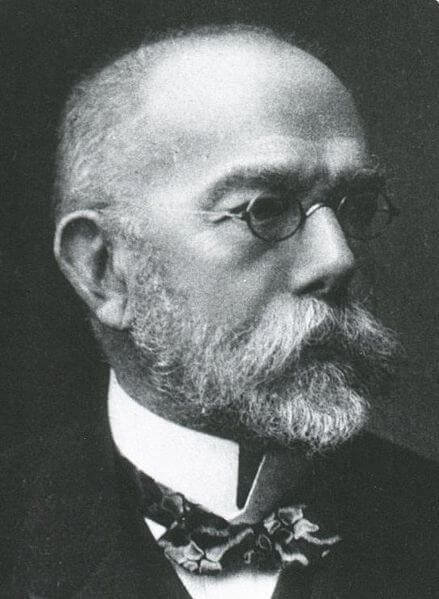The work of microbiologist Robert Koch from the end of the 19th century is still relevant to the understanding of diseases, but viruses like HIV raise the need to rethink the way bacteria work

Bracha Reger, Scientific American
In 1884, was the German microbiologist Bacteria specific and the clinical manifestation of a particular disease.
Koch's work, built on the foundations laid by Louis Pasteur, ended the debates prevalent at the time regarding the role of bacteria as disease-causing agents. For example, people in his day believed that diseases were caused by the "curses of the gods", "the position of the stars" or "bad air".
Koch stated that in order to prove that a particular bacterium causes a disease, four conditions known as Koch's "postulates" must be met:
- The same bacteria must always be isolated from the same disease.
- The bacteria isolated from the patient must be grown in pure culture in the laboratory.
- When the cultured bacterium is injected into a healthy animal, it should cause a clinical manifestation similar to that of the original disease.
- The same bacteria must be isolated again from the sick experimental animal.
Koch established these conditions when the model in front of him was the tuberculosis disease caused by the bacterium Mycobacterium Tuberculosis. Fortunately, he also had a suitable model in guinea pigs and all the conditions he set were fully met.
But Koch soon realized the limitations of the conditions he set, after it became clear to him that the bacterium that causes cholera can also be isolated from healthy people, known as carriers. Later it was found that in a significant number of infectious diseases there is a state of carriers.
viruses
The situation is even more complicated in viral diseases. The life cycle of viruses is more complex than that of bacteria and they cause a wide variety of symptoms. For example, the polio virus can cause various clinical manifestations, from diarrhea to paralysis, and it should be remembered that the paralysis appears in only 1% of patients.
And the opposite is also true - diseases of the respiratory tract are caused not only by influenza viruses but by a very large group of different viruses. So the first condition is not met in these cases.
The second and third conditions are also not met in many cases. The most notable is the case of the HIV virus. An important group of researchers, headed by Peter Duesberg, attested that this virus is the cause responsible for the AIDS disease, due to the inability to grow it in pure culture and the lack of a suitable model in an experimental animal.
Because of this, many researchers, including Frederiks Verlman, have proposed to change Koch's conditions according to the technological developments of our time. The new principles are based on the sensitive PCR technology that enables the identification of the nucleic acids of the microorganism in the host cells.
Similar to Koch's conditions, the nucleic acid sequence of the microorganism should be found in all individuals affected by the disease, and only in the affected organ or tissue and not in healthy organs or tissues. The number of copies of the sequence in question should decrease in parallel with the recovery process or increase with its worsening.
Autoimmune diseases
But the new principles still do not provide a sufficient answer for cases where the microorganism is responsible for the beginning of a pathological process that continues due to other factors, mainly the immune system.
For example, because of the special properties of viruses, and even of certain bacteria, they are suspected as one of the causes of autoimmune diseases. The direct connection between infections and autoimmune diseases has not yet been proven and is shrouded in mystery, and in order to establish it, principles similar to Koch's are needed here as well.
Indeed, in 2004 Professor A. M. Denman from Northwick Park Hospital in England and I proposed such principles for clarifying the relationship between viral infections and autoimmune diseases:
- The virus, in its various forms, should be identified in most patients of that autoimmune disease.
- In the chronic state, the virus is able to activate the immune system and cause an autoimmune response.
- The autoimmune activity of the immune system must be proven in an experimental system.
- The virus can cause a similar autoimmune process in the experimental animal.
The search for the connection between infections and autoimmune diseases continues to be at the forefront of medical research. In the years to come, this research will continue to develop in different directions and most likely the answers to solving this mystery will be found.
Bracha Reger, Emeritus Professor of Microbiology and Immunology at the Faculty of Health Sciences at Ben-Gurion University, President of ORT Israel and Chairman of ORT's Academic Council. Served as the chief scientist of the Ministry of Health and was a member of the Council for Higher Education.
